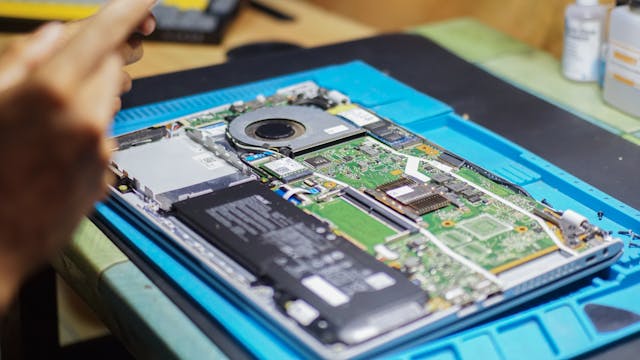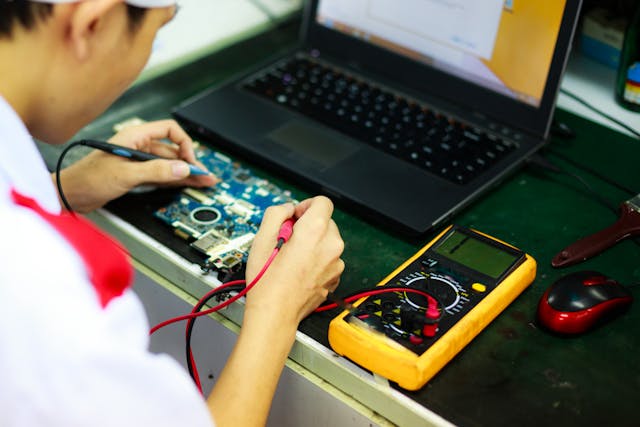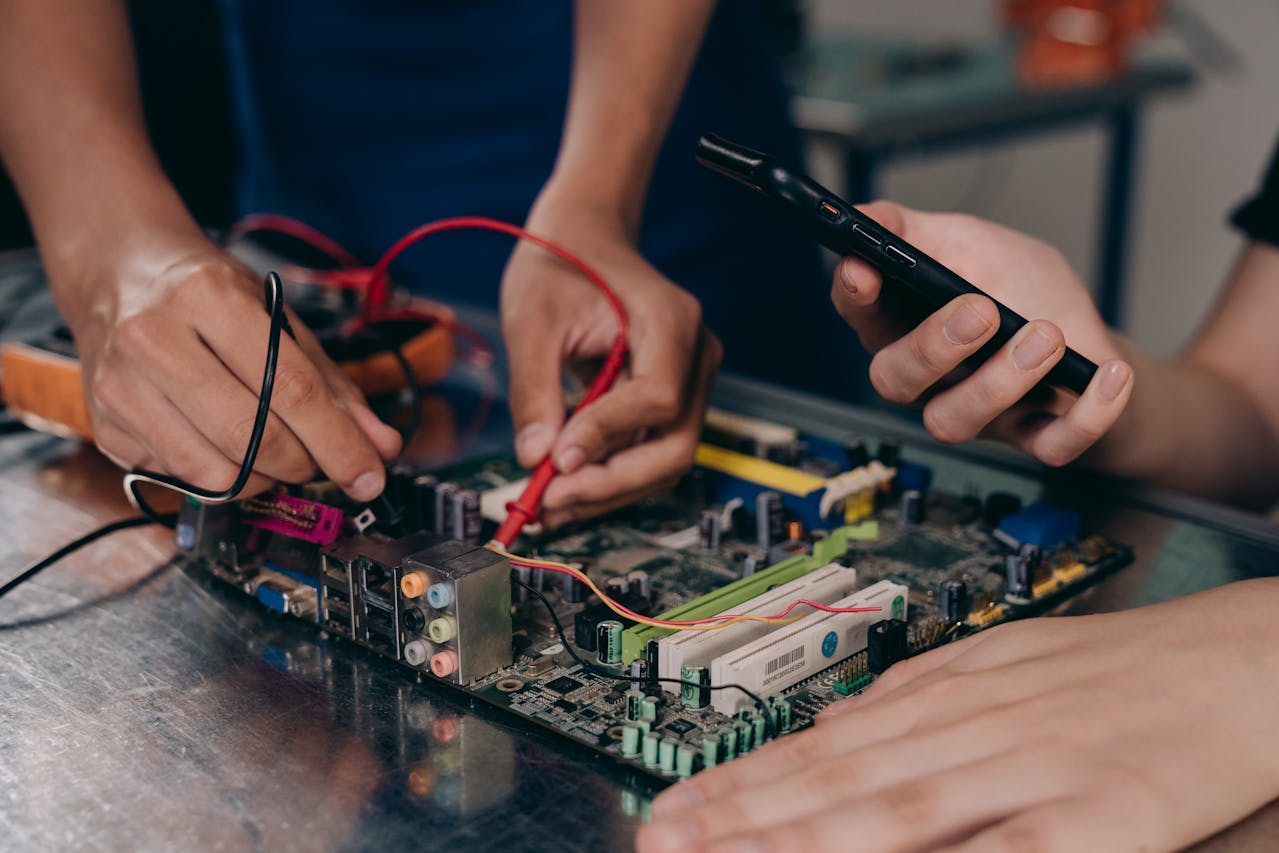It’s a horrible feeling – you hit the power button, and… nothing. No fan noise, no lights, just silence. Maybe the screen flashes for a second, maybe not even that. You stare at it, hoping it’ll magically wake up. Don’t worry – we’ve all been there. The good news ? In most cases, a “dead” computer isn’t as dead as it looks. Let’s go through what to check, step by step, before you call in the cavalry.
If you’re in the UK and need hands-on help, you can always check out https://depannageinformatiquelyon.fr – they’ve got solid, real-world experience fixing all sorts of computer issues, and their guides often inspire some of the tips I’ll share below.
1. Check the Obvious First (You’d Be Surprised)
 It sounds silly, but the number of times I’ve seen a PC “dead” just because the power strip was off… it’s more than I’d like to admit. Start simple :
It sounds silly, but the number of times I’ve seen a PC “dead” just because the power strip was off… it’s more than I’d like to admit. Start simple :
- Is the power cable properly plugged in (both ends)?
- Try a different outlet – maybe the one you’re using blew a fuse.
- If it’s a laptop, check that the charger light is on. No light ? Try another charger if you can borrow one.
Sometimes, the problem isn’t your computer at all. A bad wall socket or a tripped breaker can make you think your PC is gone for good when it’s not. So yeah, rule out the basics first – it saves you headaches.
2. Any Signs of Life ?
Press the power button and listen carefully. Fans spinning ? Lights flickering ? Beeps ? Those tiny clues tell you a lot. For example :
- Fans spin, lights on, but no display : could be RAM, graphics card, or monitor issue.
- No lights, no sound, total silence : probably power supply or motherboard.
- One long beep or several short ones : that’s your motherboard’s way of crying for help (check your BIOS beep code list online).
If you’re on a desktop, open the side panel (carefully, unplug first) and look for any obvious damage – burned smell, swollen capacitors, or loose cables. Yeah, that smell of “fried electronics”? If you know it, you know it.
3. Try a Hard Reset
Sometimes, your PC just needs a little nudge. Unplug it completely (yes, battery too if it’s a laptop). Hold down the power button for 15–20 seconds – this drains leftover electricity from the system. Then, plug back in and try again. It’s like giving your computer a mini defibrillator. I’ve seen this trick revive machines that seemed totally lifeless.
4. Test the RAM (Seriously, It’s Often That)
If your PC powers up but won’t boot, the culprit might be bad or mis-seated memory. Open up your case, take out the RAM sticks, and reinsert them firmly. If you have more than one, try booting with just one at a time. This isn’t guesswork – it’s a super common failure point.
5. Listen for the Hard Drive or SSD
If the screen stays black but you hear the drive clicking, that’s a red flag – the drive may have failed. But if you hear nothing at all, it could also mean your operating system isn’t loading. Try booting from a USB recovery stick or a Windows installation drive. If it boots from USB, your system drive might be toast.
6. Could It Be the Power Supply ?
Desktop computers depend on that metal brick called the PSU (Power Supply Unit). If that thing fails, everything goes dark. Try another power cable or, if you’ve got access to one, another PSU. Just… don’t open the PSU yourself unless you really know what you’re doing – there’s serious voltage inside, even when unplugged.
7. When the Screen Is the Problem (Not the PC)
Don’t forget to test with another monitor or plug your computer into a TV via HDMI. I’ve had clients swear their “PC was dead” when it was just the monitor’s backlight that failed. It happens more often than you’d think.
8. Still Nothing ? Time for Deeper Diagnosis
If you’ve tried everything – power, RAM, PSU, display – and your computer still refuses to cooperate, it might be time to check the motherboard or CPU. These aren’t easy or cheap to replace, so this is the point where I usually say : get a pro to test it with proper tools. No shame in that – hardware diagnostics can get tricky fast.
9. Last Resort : Data Recovery Before You Wipe
If your system drive is the issue, don’t panic about your files yet. You can remove the drive and connect it to another computer using a USB-to-SATA adapter. If it mounts, copy your data immediately. If it doesn’t, that’s when specialized recovery tools or services come into play.
10. Prevention for Next Time
 Once you’ve brought your computer back to life, make sure you don’t end up here again. Keep your machine clean, inside and out. Dust kills – literally. Use a surge protector. And, please, set up an automatic backup. I personally use a cloud + external drive combo, because drives always fail when you least expect it.
Once you’ve brought your computer back to life, make sure you don’t end up here again. Keep your machine clean, inside and out. Dust kills – literally. Use a surge protector. And, please, set up an automatic backup. I personally use a cloud + external drive combo, because drives always fail when you least expect it.
Final Thoughts
When your computer won’t start, it feels like the end of the world – especially if you’ve got deadlines, photos, or important stuff stuck in there. But nine times out of ten, it’s fixable. Go step by step, don’t panic, and test the simple things first. You might just save yourself a trip to the repair shop – or at least walk in there knowing exactly what’s wrong.
And hey, if you’re really stuck, don’t hesitate to get a professional to take a look. Sometimes a fresh pair of eyes – or a multimeter – is all it takes to bring your machine back from the dead.

